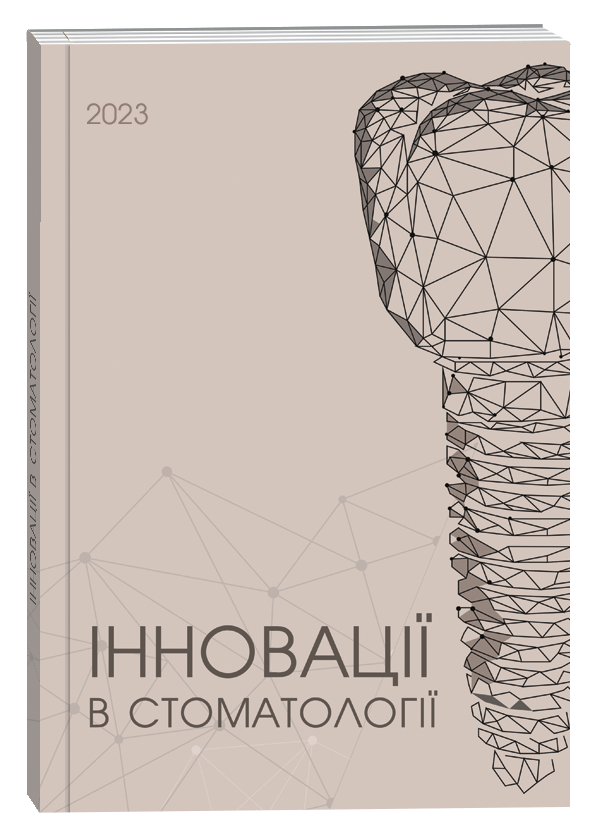НЕАПОЛЬСЬКИЙ ПРОГНОСТИЧНИЙ ПОКАЗНИК ЯК НОВИЙ КОМБІНОВАНИЙ ІНДЕКС БІОМАРКЕРІВ ЗАПАЛЕННЯ ТА АЛІМЕНТАРНОГО СТАТУСУ В ПАЦІЄНТІВ ІЗ ХРОНІЧНИМ РЕЦИДИВУЮЧИМ АФТОЗНИМ СТОМАТИТОМ
DOI:
https://doi.org/10.35220/2523-420X/2025.2.27Ключові слова:
рецидивуючий афтозний стоматит; маркер запалення; індекс системного імунного запа- лення; аліментарні показники; Неапольська прогностична оцінкаАнотація
Мета дослідження. Оцінка потенціалу нової прогностичної Неапольської шкали шляхом визначення прогностичного індекса харчування та системного запалення в хворих на ХРАС із акцентом на механізмах можливості їх модифікації. Методи дослідження. В дослідженні взяли участь 83 пацієнтів віком 20-45 років, із яких 61 пацієнтів із ХРАС (основна група) та 22 здорових осіб (контрольна група).Проведено клінічний, лабораторний, медико-соціальний метод дослідження. Гематологічне дослідження включало визначення концентрацій альбуміну та загального холестерину в сироватці крові за стандартною методикою за допомогою цифрового гематологічного аналізатора Beckman Coulter dxc 700 au (Germany); визначення показників лейкограми – на аналізаторі Erba Elite 580 (Sweden). Розрахунок значень гематологічних маркерів – NLR визначали як кількість нейтрофілів/лімфоцитів, LMR – як кількість лімфоцитів/кількість моноцитів. Остаточний підрахунок NPS проводили за дихотомічнми значеннями NLR, LMR концентраціями альбуміну та загального холестерину в сироватці крові згідно з даними Galizia та співавт. Статистичну обробку даних клінічного обстеження та лабораторного дослідження проводили з використанням стандартного програмного пакета для персональних комп’ютерів «Microsoft Excel-2007» для Windows. Наукова новизна. Встановлено, що за запропонованими Galizia G. та співавт. дихотомічними значеннями, середній рівень сироваткового альбуміну в хворих на ХРАС складає 1 бал, концентрація загального холестерину в крові складає 0 балів. Визначення NLR, LMR при ХРАС показало, щоNLR в 1,88 разів перевищував аналогічний показник групи контролю, а показник LMR був у 2,34 раза нижчим за показник пацієнтів групи контролю. Розрахунок балів біомаркерів запалення NLR і LMR показав, що обидва індекси оцінюються по 1 балу. Підсумкова оцінка індекса NPS склала 3 бали, що є високим і асоціюється з потенційно поганим результатом. Висновки. Результати проведеного нами дослідження вказують на зв’язок між ХРАС та зміною показників прогностичної Неапольської шкали за оцінкою визначення прогностичного індекса харчування та системного запалення в хворих на ХРАС. Використана нами інноваційна система підрахунку балів NPS, пов’язана з аліментарним фактором і запальною відповіддю в хворих на ХРАС може бути корисною для прогнозування перебігу захворювання.
Посилання
Mortazavi H., Safi Y., Baharvand M., Rahmani S. Diagnostic Features of Common Oral Ulcerative Lesions: An Updated Decision Tree. Int J Dent. 2016. e7278925. URL: https://doi.org/10.1155/2016/7278925
Queiroz S.I.M.L., Silva M.V.A.D., Medeiros A.M.C., Oliveira P.T., Gurgel B.C.V., Silveira É.J.D.D. Recurrent aphthous ulceration: an epidemiological study of etiological factors, treatment and differential diagnosis. An Bras Dermatol. 2018. No 93(3). P. 341–346. URL: https://doi.org/10.1590/abd1806-4841.20186228
Chavan M., Jain H., Diwan N., Khedkar S., Shete A., Durkar S. Recurrent aphthous stomatitis: a review. J Oral Pathol Med. 2012. No 41(8). P. 577–583. URL: https://doi.org/10.1111/j.1600-0714.2012.01134.x
Dalessandri D., Zotti F., Laffranchi L.et al. Treatment of recurrent aphthous stomatitis (RAS; aphthae; canker sores) with a barrier forming mouth rinse or topical gel formulation containing hyaluronic acid: a retrospective clinical study. BMC Oral Health. 2019. No 19. e153 URL: https://doi.org/10.1186/s12903-019-0850-1
Gasmi Benahmed A., Noor S., Menzel A., Gasmi A. Oral Aphthous: Pathophysiology, Clinical Aspects and Medical Treatment. Arch Razi Inst. 2021. No 76(5). P. 1155–1163. URL: https://doi.org/10.22092/ari.2021.356055.1767
Yousefi H., Gholami M., Zoughi M., Rezaei N., Chuppani A., Nikfar S., Amoli M.M. Role of genetic polymorphisms in recurrent aphthous stomatitis: A systematic review and meta-analysis. Cytokine. 2022. No 153. e155864. URL: https://doi.org/10.1016/j.cyto.2022.155864
Li C., Wu Y., Xie Y., Zhang Y., Jiang S., Wang J., et al. Oral manifestations serve as potential signs of ulcerative colitis: A review. Front Immunol. 2022. No 13. e1013900. https://doi.org/10.3389/fimmu.2022.1013900
Thakrar P., Chaudhry S.I. Oral Ulceration: An Overview of Diagnosis and Management. Prim Dent J. 2016. No 5(1). P. 30–33. URL: https://doi.org/10.1177/205016841600500102
Masri O.A., Chalhoub J.M., Sharara A.I. Role of vitamins in gastrointestinal diseases. World J Gastroenterol. 2015. No 21(17). P. 5191–209. URL: https://doi.org/10.3748/wjg.v21.i17.5191
Ajmal M., Ibrahim L., Mohammed N., Al-Qarni H. Prevalence and psychological stress in recurrent aphthous stomatitis among female dental students in Saudi Arabia. Clujul Med. 2018. No 91(2). P. 216–221. URL: https://doi.org/10.15386/cjmed-840
Dhopte A., Naidu G., Singh-Makkad R., Nagi R., Bagde H., Jain S. Psychometric analysis of stress, anxiety and depression in patients with recurrent aphthous Stomatitis-A cross-sectional survey based study. J Clin Exp Dent. 2018. No 10(11). e1109-e1114. URL: https://doi.org/10.4317/jced.55012
Sánchez-Bernal J., Conejero C., Conejero R. Aftosis oral recidivante. Actas Dermo-Sifiliográficas. 2020. 111(6). P. 471–480. URL: https://doi.org/10.1016/j.ad.2019.09.004
Noor S., Piscopo S., Gasmi A. Nutrients Interaction with the Immune System. Arch Razi Inst. 2021. No 76(6). P. 1579–1588. URL: https://doi.org/10.22092/ari.2021.356098.1775
Compilato D., Carroccio A., Calvino F., Di Fede G., Campisi G. Haematological deficiencies in patients with recurrent aphthosis. J Eur Acad Dermatol Venereol. 2010. No 24(6). P. 667–673. URL: https://doi.org/10.1111/j.1468-3083.2009.03482.x
Lankarani K.B., Sivandzadeh G.R., Hassanpour S. Oral manifestation in inflammatory bowel disease: a review. World J Gastroenterol. 2013. No 19(46). P. 8571–8579. URL: https://doi.org/10.3748/wjg.v19.i46.8571
Nur’aeny N. Recurrent Aphthous Stomatitis: A Review of Hematinic Deficiency Factor. European Journal of Theoretical and Applied Sciences. 2024. No 2(1). P. 291–297. URL: https://doi.org/10.59324/ ejtas.2024.2(1).24
Al-Maweri S.A., Halboub E., Al-Sufyani G., Alqutaibi A.Y., Shamala A., Alsalhani A. Is vitamin D deficiency a risk factor for recurrent aphthous stomatitis? A systematic review and meta-analysis. Oral Dis. 2020. No 26(6). P. 1116–1123. URL: https://doi.org/10.1111/odi.13189
Zhu Z., He Z., Xie G., Fan Y., Shao T. Altered oral microbiota composition associated with recurrent aphthous stomatitis in young females. Medicine (Baltimore). 2021. No 100(10). e24742. URL: https://doi.org/10.1097/MD.0000000000024742
Al-Samadi A., Drozd A., Salem A., Hietanen J., Häyrinen-Immonen R., Konttinen Y.T. Epithelial Cell Apoptosis in Recurrent Aphthous Ulcers. J Dent Res. 2015. No 94(7). P. 928–935. URL: https://doi.org/10.1177/0022034515581012
Chiang C.P., Yu-Fong Chang J., Wang Y.P., Wu Y.H., Wu Y.C., Sun A. Recurrent aphthous stomatitis – Etiology, serum autoantibodies, anemia, hematinic deficiencies, and management. J Formos Med Assoc. 2019. No 118(9). P. 1279–1289. URL: https://doi.org/10.1016/j.jfma.2018.10.023
Halboub E., Al-Maweri S.A., Parveen S., Al-Wesabi M., Al-Sharani H.M., Al-Sharani A., et al. Zinc supplementation for prevention and management of recurrent aphthous stomatitis: a systematic review. J Trace Elem Med Biol. 2021. No 68. e126811. URL: https://doi.org/10.1016/j.jtemb.2021.126811
Mousavi T., Jalali H., Moosazadeh M. Hematological parameters in patients with recurrent Aphthous Stomatitis: a systematic review and meta-analysis. BMC Oral Health. 2024. No 24(1). e339. URL: https://doi.org/10.1186/s12903-024-04072-5
Hijazi K., Morrison R.W., Mukhopadhya I., Martin B., Gemmell M., Shaw S., Santoro F. Oral bacterial diversity is inversely correlated with mucosal inflammation. Oral Dis. 2020. No 26(7). P. 1566–1575. URL: https://doi.org/10.1111/odi.13420
Merker M., Felder M., Gueissaz L., Bolliger R., Tribolet P., Kägi-Braun N., et al. Association of Baseline Inflammation With Effectiveness of Nutritional Support Among Patients With Disease-Related Malnutrition: A Secondary Analysis of a Randomized Clinical Trial. JAMA Netw Open. 2020. No 3(3). e200663. URL: https://doi.org/10.1001/jamanetworkopen.2020.0663
Mann E.R. Lam Y.K., Uhlig H.H. Short-chain fatty acids: linking diet, the microbiome and immunity. Nat Rev Immunol. 2024. No 24(8), P. 577–595. URL: https://doi. org/10.1038/s41577-024-01014-8
Stumpf F., Keller B., Gressies C., Schuetz P. Inflammation and Nutrition: Friend or Foe? Nutrients. 2023. No 15(5). e1159. URL: https://doi.org/10.3390/nu15051159
Yang Y.M., Kim S.Y., Seki E. Inflammation and Liver Cancer: Molecular Mechanisms and Therapeutic Targets. Semin Liver Dis. 2019. No 39(1). P. 26–42. URL: https://doi.org/10.1055/s-0038-1676806
Ruiz-Margáin A., Román-Calleja B.M., Moreno- Guillén P., González-Regueiro J.A., Kúsulas-Delint D., et al. Nutritional therapy for hepatocellular carcinoma. World J Gastrointest Oncol. 2021. No 13(10). P. 1440–1452. URL: https://doi.org/10.4251/wjgo.v13.i10.1440
Guo X.W., Ji L., Xi X.X., Zhao W.W., Liu Y.C., Zhou S.B., Ji S.J. Predictive potential of preoperative Naples prognostic score-based nomogram model for the prognosis in surgical resected thoracic esophageal squamous cell carcinoma patients: A retrospective cohort study. Medicine (Baltimore). 2024. No 103(18). e38038. URL: https://doi.org/10.1097/MD.0000000000038038
Galizia G., Lieto E., Auricchio A., Cardella F., Mabilia A., Podzemny V., Castellano P., Orditura M., Napolitano V.. Naples Prognostic Score, Based on Nutritional and Inflammatory Status, is an Independent Predictor of Long-term Outcome in Patients Undergoing Surgery for Colorectal Cancer. Dis Colon Rectum. 2017. No 60(12). P. 1273–1284. URL: https://doi.org/10.1097/DCR.0000000000000961
Peng S.M., Ren J.J., Yu N., Xu J.Y., Chen G.C., et al. The prognostic value of the Naples prognostic score for patients with non-small-cell lung cancer. Sci Rep. 2022. No 12(1). e5782. URL: https://doi.org/10.1038/s41598-022-09888-1
Erdogan A., Genc O., Ozkan E., Goksu M.M., Ibisoglu E., et al. Impact of Naples Prognostic Score at Admission on In-Hospital and Follow-Up Outcomes Among Patients with ST-Segment Elevation Myocardial Infarction. Angiology. 2023. No 74(10). P. 970–980. URL: https://doi.org/10.1177/00033197231151559
Aytaç İ., Güven Aytaç B., Kilci O., Ölçücüoğlu E. Naples Prognostic Score for Graft Functions After Renal Transplantation: A Retrospective Analysis. Ann Transplant. 2023. No 28. e942007. https://doi.org/10.12659/AOT.942007
Liu R., Chen C., Zhao Y., Tang Y., Shen W., Xie Z. The Osaka prognostic score and Naples prognostic score: novel biomarkers for predicting short-term outcomes after spontaneous intracerebral hemorrhage. BMC Neurol. 2023. No 23(1). e272. URL: https://doi.org/10.1186/s12883-023-03287-3
Liu J., Wang Z., Liu G., Liu Z., Lu H., Ji S. Assessment of Naples prognostic score in predicting survival for small cell lung cancer patients treated with chemoradiotherapy. Ann Med. 2023. No 55(2). e2242254. URL: https://doi.org/10.1080/07853890.2023.2242254
Wu W.W. Association of naples prognostic score and lung health: A population-based study. Respir Med. 2024. No 232. e107751. URL: https://doi.org/10.1016/j.rmed.2024.107751
Гевкалюк Н.О., Кутоловський Д.Р. Імунологіч- ний фенотип пацієнтів, хворих на хронічний рецидивуючий афтозний стоматит, за біомаркерами запалення. Вісник стоматології. 2024. No 4(129). С. 67–74. URL: https://doi.org/10.35220/2078-8916-2024-54-4.13
Kutolovskyi D.R., Gevkaliuk, N.O. Structural- functional determinants of vitamin D status and hematological indicators in patients with chronic recurrent aphthous stomatitis. Regulatory Mechanisms in Biosystems. 2025. No 33(1), e25024. URL: https://doi.org/10.15421/0225024
Xu K., Zhou C., Huang F., Duan N., Wang Y., et al. Relationship between dietary factors and recurrent aphthous stomatitis in China: a cross-sectional study. J Int Med Res. 2021. No 49(5). e3000605211017724. URL: https://doi.org/10.1177/03000605211017724
Gülseren D., Hapa A., Ersoy-Evans S., Elçin G., Karaduman A. Is there a role of food additives in recurrent aphthous stomatitis? A prospective study with patch testing. Int J Dermatol. 2017. No 56(3). P. 302–306. URL: https://doi.org/10.1111/ijd.13515
Huling L.B., Baccaglini L., Choquette L., et al. .Effect of stressful life events on the onset and duration of recurrent aphthous stomatitis. Journal of oral pathology & medicine: official publication of the International Association of Oral Pathologists and the American Academy of Oral Pathology. 2012. No 41. P. 149–152. URL: https://doi.org/10.1111/j.1600-0714.2011.01102.x
Wang Z., Cao H., Xiong J., Lu Y., Deng Y., et al. Recent advances in the aetiology of recurrent aphthous stomatitis (RAS). Postgrad Med J. 2022. No 98(1155). P. 57–66. URL: https://doi.org/10.1136/postgradmedj-2020-139421
Степанов Ю.М, Тітова М.В, Стойкевич М.В. Нутритивний статус хворих на і методи його оцінки. Gastroenterologìa. 2019. No 53(4). P. 273–281. URL: https://doi.org/10.22141/2308-2097.53.3.2019.182407
Gúlcan E. Serum lipid levels in patients with minor recurrent aphthous ulcers. Am J Dent. 2015. No 28(3). P. 133–136. PMID: 26201223. URL: https://pubmed.ncbi.nlm.nih.gov/26201223/
Ślebioda Z., Krawiecka E., Szponar E., Dorocka-Bobkowska B. Evaluation of serum zinc levels in patients with recurrent aphthous stomatitis (RAS). BMC Oral Health. 2017. No 17(1). e158. URL: https://doi.org/10.1186/s12903-017-0450-x
Sakata N., Moh A., Takebayashi S. Contribution of superoxide to reduced antioxidant activity of glycoxidative serum albumin. Heart Vessels. 2002. No 17(1). P. 22–29. URL: https://doi.org/10.1007/s003800200038
Kragh-Hansen U., Minchiotti L., Galliano M., et al. Human serum albumin isoforms: genetic and molecular aspects and functional consequences. Biochim. Biophys. Acta. 2013. No 1830(12). P. 5405–5417. URL: https://doi.org/10.1016/j.bbagen.2013.03.026
Levick J.R., Michel C.C. Microvascular fluid exchange and the revised Starling principle. Cardiovasc Res. 2010. No 87(2). P. 198–210. URL: https://doi.org/10.1093/cvr/cvq062
Veneman T.F., Oude Nijhuis J., Woittiez A.J. Human albumin and starch administration in critically ill patients: a prospective randomized clinical trial. Wien Klin Wochenschr. 2004. No 116(9-10). P. 305–309. URL: https://doi.org/10.1007/BF03040900
Balmus I.M., Ciobica A., Trifan A., Stanciu C. The implications of oxidative stress and antioxidant therapies in Inflammatory Bowel Disease: Clinical aspects and animal models. Saudi J Gastroenterol. 2016. No 22(1). P. 3–17. URL: https://doi.org/10.4103/1319-3767.173753
Muro P., Zhang L., Li S., Zhao Z., Jin T., Mao F., Mao Z. The emerging role of oxidative stress in inflammatory bowel disease. Front Endocrinol (Lausanne). 2024. No 15. e1390351. URL: https://doi.org/10.3389/fendo.2024.1390351
Hasegawa T., Iga T., Takeda D., Amano R., Saito I., et al. Neutrophil-lymphocyte ratio associated with poor prognosis in oral cancer: a retrospective study. BMC Cancer. 2020. No 20(1). e568. URL: https://doi.org/10.1186/s12885-020-07063-1
Zahorec R. Neutrophil-to-lymphocyte ratio, past, present and future perspectives. Bratisl Lek Listy. 2021. No 122(7). P. 474–488. URL: https://doi.org/10.4149/BLL_2021_078
##submission.downloads##
Опубліковано
Як цитувати
Номер
Розділ
Ліцензія

Ця робота ліцензується відповідно до Creative Commons Attribution 4.0 International License.







